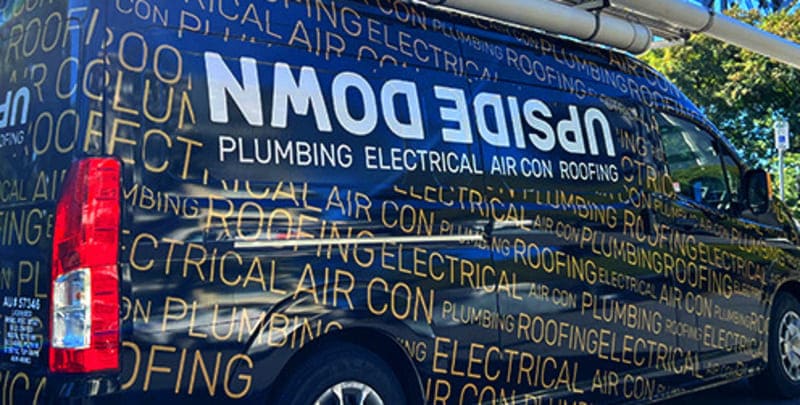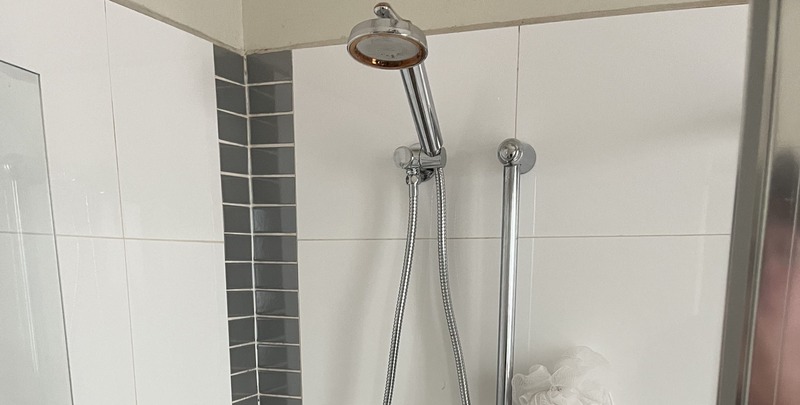5 Reasons for Low Water Pressure in Shower Heads

Of the many modern luxuries that we’re accustomed to, a good shower ranks high. The sporadic but unnerving issue of our ceiling-mounted shower heads with low water pressure can seriously dampen the joy of a great shower.
But first, let’s understand how a shower head works, recognise the symptoms of a faulty shower head, and then dive into the main causes of low water pressure in a shower head.
How Does a Shower Head Work?
Shower heads come in various shapes, sizes, and designs, such as square shower heads, rail showers, and rain shower heads. However, they operate on a straightforward principle.
Water from your home’s piping system gets directed into the shower arms, which hold the shower heads. This water then gets dispersed through several small nozzle spray holes to provide a wide, comfortable spray pattern.
Whether it’s a rain shower head, overhead shower, handheld or square, the functionality remains the same. The water pressure we experience while taking a shower is largely determined by the plumbing system’s efficiency.
Signs of a Faulty Shower Head
In the realm of bathroom maintenance, being able to recognise the symptoms of a faulty shower head is of significant importance.
Below, we outline several key signs that your shower head is possibly on the blink.
- Irregular spray pattern: One of the quintessential signs that your shower head is under the weather revolves around the inconsistency in the water spray. This is especially obvious if you’re using a handheld shower. An unsteady or irregular spray can suggest there might be blockages or issues within the shower head that are causing the water to be distributed unevenly.
- Leakage: If you observe water dripping from your shower head when the shower has been turned off, this is a tell-tale sign that something is not right. Most often, the perpetrator of such leakage is a deteriorating seal on the fixed shower head or a problem with the shower’s plumbing.
- Diminished water flow: Experiencing a reduction in water flow is a common issue that could potentially point to a problem with the shower head. This could be attributed to a multitude of situations, from a clogged shower head caused by limescale buildup to a broader issue within the house’s water supply system.
- Unusual noise: A shower head should ideally operate without producing disruptive noises. If you notice odd noises originating from your shower head, there may be a fundamental issue at play. This could be due to blockages, broken parts within the shower head or even a drop in water pressure in your plumbing.
- Visible mineral accumulation: If you can physically see mineral deposits or hard water accumulation on the surface of the shower head, this is a clear-cut indicator that your shower head might be suffering. This physical buildup of substances can negatively affect the water flow and overall performance of your shower head, particularly in areas notorious for hard water supply.
By proactively keeping an eye out for these signs, you can promptly attend to any emerging troubles before they escalate, thereby ensuring your shower head continues to perform at its peak for an extended lifespan.
Main Causes of Low Water Pressure
Now that you know the signs to watch out for in detecting faulty shower heads, it’s time to understand what causes them. Here are five main reasons:
1. Clogged Shower Head
Just like any other component of your bathroom styles, your shower head does require cleaning. Over time, shower heads can gather limescale, sediment, or even tiny debris.
This buildup can cause your shower head to get clogged, leading to a reduction in water flow and hence, lower pressure. Regular cleaning or replacement of certain parts like the flexible hose can rectify this.
2. Shower Head Design and Functionality
Water-saving shower head designs are indeed beneficial for the environment, but they intentionally restrict the volume of water flow to conserve water.
This reduction in water flow can be perceived as a decrease in water pressure, often resulting in a softer, more gentle spray that not everyone may prefer.
3. Poor Shower Arm Installation
A poor or incorrect installation of the shower arm can also be a culprit, causing low water pressure.
If the shower arm is not installed correctly, is leaking, or isn’t structurally sound enough to support the shower head, it can hinder water flow.
4. Damaged or Clogged Shower Arm
Sediment or limescale buildup isn’t exclusive to shower heads and can also happen on a shower arm.
Wear and tear or breakage could also impair the shower arm’s overall functionality, which can indirectly affect your shower’s water pressure.
5. Issues with the Bathroom Plumbing System
A fully operational plumbing system is essential for maximum water pressure. If the valves supplying water to your shower aren’t fully open, it will visibly affect water flow.
Leaks in your plumbing system can similarly cause a drop in water pressure.
For Your Shower System Woes, Call a Pro
While regular maintenance and checks can prevent or identify reasons for low water pressure, it is always advisable to consult a professional when it comes to dealing with plumbing issues.
They are equipped with the right tools, knowledge and can ensure all your bathroom fixtures are working effectively and efficiently.
Maintaining Your Shower Heads
Ensuring the longevity of your shower head requires some simple but regular maintenance actions. Adopting these practices will not only prolong the life of your shower head but also ensure a consistent, high-quality shower experience.
- Regular cleaning: One of the easiest ways to maintain your shower head is to clean it regularly. This helps prevent the build-up of minerals and other debris that can block the tiny holes in the shower head. Scrub the shower head with a toothbrush and a bathroom cleaning solution or use a toothpick to remove any noticeable blockage.
- Deep cleaning: Deep cleaning requires a bit more effort but is highly beneficial for maintaining your shower head. Wrap the shower head in a bag full of white vinegar and leave it soaking overnight. The vinegar helps to dissolve hard water deposits and limescale. Just remember to run the right shower head for a few minutes in the morning to flush out the vinegar before using it.
- Checking for leaking: Regularly inspect the shower head for any leaks. If water continues to drip out of the shower head when the shower is switched off, there may be a problem with the valve. You can often fix this issue simply by tightening the shower head or replacing a worn-out washer.
- High water pressure: Make sure your water pressure in your shower area isn’t too high; excessive pressure can damage your shower head over time. If your home’s water pressure is typically quite high, consider installing a pressure-reducing valve or choosing a shower head designed to withstand higher pressures.
- Regular replacement of parts: Some parts of the shower head, like a washer or O-ring, might wear out over time. Routine inspection and prompt replacement of these parts will keep your shower head functioning optimally.
- Avoiding harsh chemicals: When cleaning your shower head, avoid using abrasive cleaners. These substances can cause damage to the shower head’s finish and potentially degrade the rubber washers inside the shower head.
- Professional check-ups: For any significant reductions in shower performance or stubborn problems, it may be worth calling in a plumber for a professional diagnosis. Sometimes, the issue might lie deeper within your plumbing system, and professional help will be beneficial.
By engaging in these maintenance practices, you can ensure your shower head remains unclogged and functions at its best, delivering a refreshing shower each time.

Give Your Shower Heads Some TLC
The reasons for low water pressure in shower heads are varied, including the design of your shower head, irregularities in your home’s plumbing system, or issues with the shower head itself.
While low water pressure can be a frustrating issue, identifying the signs early on, knowing the possible causes, and taking corrective measures can help rectify the problem promptly and efficiently. Essentially, being equipped with the knowledge of what causes these cold and hot shower problems can empower you to either solve them or seek professional help.
Moreover, mindful maintenance and care of your shower head play an exclusive role in prolonging its lifespan and maintaining its performance.
Regular cleaning, periodic deep cleaning, checking for leaks, confirming appropriate water pressure, replacing worn-out parts, avoiding harsh chemicals, and scheduling professional check-ups prove instrumental in these endeavours.
In the end, keeping a happy balance of personal body upkeep and professional guidance can help you maintain a blissful, uninterrupted shower experience.
Please note: This information is provided for advice purposes only. Regulations differ from state to state, so please consult your local authorities or an industry professional before proceeding with any work. See our Terms & Conditions here.